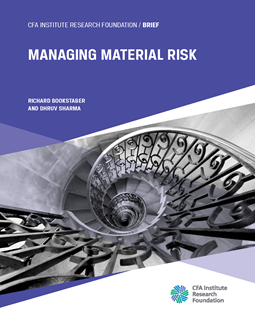
Overview
The current methods used to assess market and portfolio risk extend back to the early 1990s. These methods were developed for banks and broker/dealers and then were adopted by the portfolio management and hedge fund community. This audience focuses on short-term risk, which is measured in days for the broker/dealer’s blotter and in months for hedge funds and investment managers. The current methods fail to reflect the dynamics that become increasingly important over the long term—dynamics that generate the periods of major downturns and instability that can derail lifestyle goals and even threaten basic financial security. These are the material risks for individuals and other asset owners. Unlike a bank or portfolio manager, risk comes at an individual from two directions: (1) the market risk that directly affects individual wealth and (2) the personal risk that comes from the uncertainty of life events and changes in risk tolerance and preferences. These interact to make an individual’s risk calculation complex and dynamic.
Risk management for an individual is a moving target that is dynamic, multifaceted, and complex. We need a new approach to address it. One such approach is agent-based modeling. Agent-based models are used in fields in which complex dynamics are at work, from modeling traffic congestion on a highway to assessing the adequacy of exits for crowded venues, such as stadiums and arenas. Thus, it is not surprising that these are applicable to modeling material risk in financial markets.
This paper starts by highlighting market characteristics that are relevant for material risk. It then discusses how to extend current risk methods to deal with these risks by using agent-based modeling and by considering the interactions of market risk as well as the risk coming from the asset owner.
